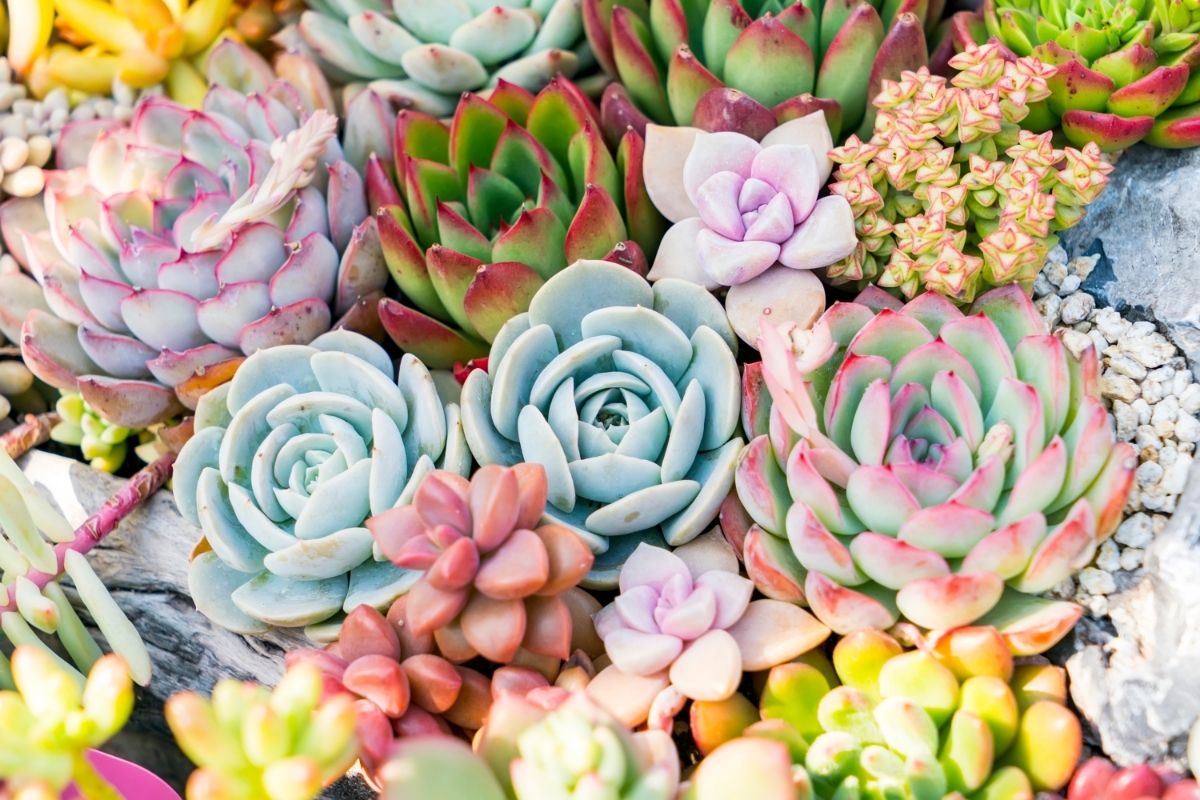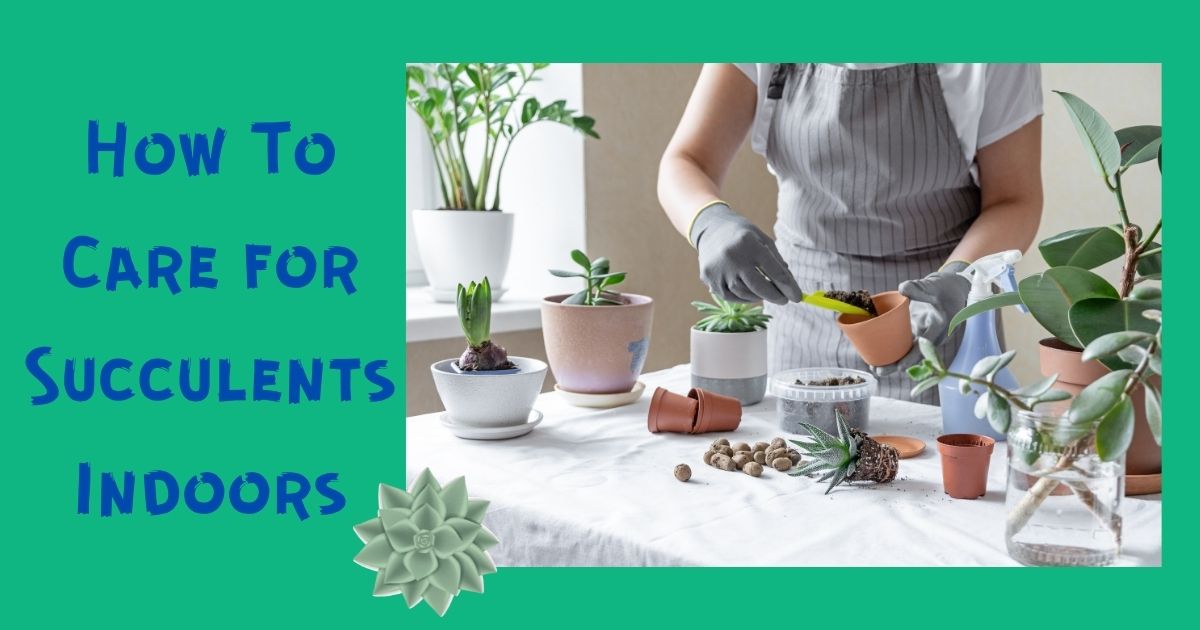Succulent Indoor Plants
Succulents are the best indoor plants you can have. But do you have any knowledge on how to care for succulents indoors? These plants have adapted to survive in dry conditions. Since most homes offer dry interior air to houseplants during winter, this is the reason why they are best suited as indoor plants. With succulents, you will never go wrong! So, how do you best care for such plants indoors?
What Are Succulents?
Succulents are a group of plants that have thick and fleshy leaves. You will notice that some species of succulents have thicker leaves than others. The leaves enable the succulents to grow in dry environments. This is because they can endure extended periods of drought. However, most succulents thrive in warm temperatures and are not able to withstand freezing.
The succulents store water and nutrients in their leaves. When you expose succulents to different conditions that they are not used to, like too much, or lack of enough sunlight, the succulents change in color. They will change color from pink, orange, and purple to almost black and red.
As much as succulents need water to survive, they can survive long periods without water. This is because they will depend on the water and nutrients stored in their leaves. However, when you give them more water, their leaves will surge and eventually fall off.
Furthermore, If you leave the roots of succulents to sit in water for too long, they start to rot, and your succulents will suddenly die.

A List of the Best Succulents to Grow Indoors
There are many succulents that you can choose from. Here is a list of some of the best-sampled succulents names you can plant indoors.
- Christmas Kalanchoe (kalanchoe blossfeldiana)
- Jade plant (Crassula ovata)
- Crown of thorns (Euphorbia milii)
- Medicine plant (Aloe vera)
- Mother-in-law tongue or snake plant (sansevieria trifasciata)
- Pebble plant or living stone (lithops)
- Burro’s tail (sedum morganianum)
- Pencil cactus (Euphorbia tirucalli)
- Hens-and-chicks (sempervivum tectorum or Echeveria elegans)
- String of pearls (senecio rowleyanus)
- Christmas cactus (schlumbergera x buckleyi)
- Zebra cactus (haworthia fasciata)
- Panda plant (kalanchoe tomentosa)
- String of bananas (senecio radicans)
A Step-by-Step Guide to Growing Succulents Indoors
Have you planted succulents before? If yes, have you kept succulents indoors before? You may be wondering and asking yourself different questions like how to take care of succulents or how to keep succulents alive.
Here is a succulent care guide that will help you understand how to grow succulents indoors. This is a step-by-step guide is aimed at equipping you with all you need to understand on growing succulents indoors:
Select an appropriate succulent for your indoor conditions
Most succulents thrive well under direct sunlight. If your house does not have such requirements, go for those succulents with low light tolerant capabilities like the mother-in-law tongue. Always check the succulent plant labels to determine the sunlight needs, size, and spread of your plants. When you ascertain all these, check if they match your conditions.
When getting your succulents from a nursery, make sure you repot them immediately when you bring them home
This is important because nurseries tend to use soil overly rich in nutrients that retain too much moisture. Such conditions may not be suitable for your plants. Therefore, when repotting, make sure you choose the type of soil best fit for succulents.
Select your container
When repotting your succulents, make sure you replant them in a 1 to 2 inches (2.54cm to 5.08cm) bigger than the nursery container. Besides that, do not use a glass container. A glass container does not allow roots to breathe and can cause them to rot with time when they soak in water for extended periods.
When repotting, use a container that has a drainage hole
This will allow your container to drain away excess water when watering your succulents. Fill the capacity of the container to one-third with moistened potting soil mix and place your plant inside the pot and fill the container with more moistening potting mix until the roots of the plant are covered and securely in place.
Put your potted succulent in a bright or sunny area
Naturally, succulents thrive well under hot, sunny conditions. Therefore, place your pot at a point where your plant will access light for at least six hours a day. This will enable them to grow healthy.
Allow the soil for succulents to dry in between watering periods
Allow the soil to dry before you water the plant again. You should not over water succulents. However, you can water them more but less regularly to allow the potting mix to dry. The plant might end up dying if the soil retains water for an extended period of time.
Apply fertilizer to your succulents at least once a year
When doing this exercise, make sure you use a well-balanced, versatile, and water-soluble fertilizer. However, it is unnecessary to fertilize succulents during winter as they do not need the nutrients boost since they are not actively growing.

How to Care for Succulents Indoors – Our Top Tips
There are several succulent varieties you can grow indoors. When growing succulents inside your house or office, you will need a few tips to guide you. Here are a few but essential pieces of information that you must always be aware of:
Keep the soil for Succulents Low on Humidity
Succulents do best in low humidity. A moist environment will cause them problems with rot and fungus. Besides, they will tend to change color. Therefore, as much as you need to water them, make the waiting period between watering longer. Too much water will make succulent leaves shed off.
Provide Good Air Circulation
Good air circulation will provide fresh air that keeps away pests. Conversely, poor air circulation will expose your plants to infestations like mealy bugs, spider mites, and other pests.
However, spray them with 70% isopropyl alcohol when your succulents are pest-infested. Remember to isolate the infested plants to stop the spread of the pests to the other plants. Keep the areas around your plants clean.
Keep Your Succulents Near a Window
Indoor succulents will tend to lean towards the direction of the sun. Others will tend to flatten and elongate their leaves to get more sunlight. Placing your succulents near a window with enough sunlight helps provide good succulent care.
Install Grow Lights in Your House
It is advisable to position your indoor succulent plants beneath lights that are on at least for six hours a day. T-5 grow lights are the best recommended. If your succulents bent towards the light source or start to flatten, add more bulbs or move your succulents closer to the lights you already have.
Regulate the Temperature in Your Room
Since succulents thrive well in areas with high temperatures of between 40-80°F and low humidity. You will be required to maintain your room temperature at a favorable temperature rate favorable to your succulents to avoid your succulents from dying.
Choose a Container With Good Drainage
Since succulents do not like an environment with a lot of water, you will need a container with drainage holes. This will allow excess water to flow out. This will ensure that your plants grow up healthy and avoid the roots from rotting or leaves falling off the stem. Terra-cotta pots are the best in this case.
Choose the Best Soil for Indoor Succulents
Since the succulents do not require much water, select the best type of soil that does not retain much water.

FAQs on Caring for Indoor succulents
Can I use sand to plant succulents?
Yes, you can use sand, but only if you go for the coarse kind. Fine sand will retain water which is not suitable for your plants. This will cause your succulent roots to rot and die. If you wish to plant them in sand, think of it either as a short-term and fun project or just for beauty purposes but not for the long term.
Can you grow succulents from seeds?
Yes, succulents can be grown from seeds, although growing from seeds will take a long time. Some species like the Sempervivum take up to years to mature and produce seeds. Even after collecting your seeds, they can still take from three weeks to a year to germinate.
Why are my succulents’ leaves falling off?
The most common reason why your succulent leaves fall off may be due to watering. When you give them too much water, the leaves swell, become soft, and fall off. Leaves may also fall off due to a pest infestation or sometimes because of diseases. But just like any other plant, the lower leaves closer to the potting mix will shrivel up and fall off.
Key Highlights
Are you thinking about beautifying your house? Think no further than succulents! These plants have fleshy, thickened leaves and swollen stems that store water. However, you can plant your succulents in containers with soil that does not retain much water.
Too much water may cause the succulent plants to die off. The containers must not be made of glass to allow the roots to breathe and should have good drainage to allow excess water to flow out.
Furthermore, when setting your succulents in the house, place them where they receive the maximum amount of light. Of course, you will ask yourself this question, “do succulents need sun?”
You should allow them a minimum of six hours of exposure to sunlight. If you put them at a point with no natural light like a window, install grow lights in your house to provide the required hours of exposure daily.
It would be best to keep the succulents clean and provide fertilizer once a year to preserve nutrients. Lastly, spray them to keep pests and diseases at bay. All you need is excellent succulent plant care knowledge that we’ve now covered in this article.
